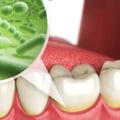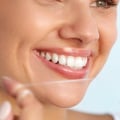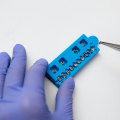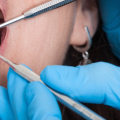Oral hygiene is the practice of keeping your mouth clean and disease-free. It involves brushing and flossing your teeth, as well as visiting your dentist regularly for dental x-rays, exams, and cleanings.
oral hygiene
is the aspect of dental care that covers keeping teeth and gums as clean and healthy as possible and free of disease. Regular brushing and flossing daily to clean between your teeth help ensure your smile lasts a lifetime.All content on this website, including dictionaries, thesauri, literature, geography and other reference data, is for information purposes only. This information should not be considered complete, up to date and should not be used in place of a visit, consultation or advice from a legal professional, medical or any other professional. Does your daily routine include oral care? Good oral hygiene is vital to your overall health. Also known as dental hygiene, oral hygiene is a routine of cleaning your teeth and gums.
Proper Oral Care Helps Healthy Teeth, Healthy Gums, and Fresh Breath. Find out how to start your day with a good oral hygiene routine with these tips. Good oral hygiene can have many different meanings, but we all agree that the result is one in the same. Making sure you have the healthiest and cleanest mouth possible is just as important as appearance.
To ensure your teeth stay healthy (and beautiful), it's important to brush, floss, and use mouthwash to remove plaque and bacteria and prevent cavities. Oral hygiene is the practice of keeping your mouth clean and free of diseases and other problems (e.g. Bad breath) through regular brushing of teeth (dental hygiene) and cleaning between teeth. It is important that oral hygiene is carried out on a regular basis to allow prevention of dental diseases and bad breath.
The most common types of dental diseases are tooth decay (tooth decay, tooth decay) and gum disease, including gingivitis and periodontitis. Sometimes white or straight teeth are associated with oral hygiene. However, a hygienic mouth can have stained or crooked teeth. To improve the appearance of their teeth, people can use teeth whitening and orthodontic treatments.
The importance of the role of the oral microbiome in dental health is increasingly recognized. Data from human oral microbiology research show that a commensal microflora can change to an opportunistic pathogenic flora through complex changes in its environment. These changes are driven by the host and not by bacteria. Archaeological evidence of calcified dental plaque shows marked changes in the oral microbiome to a disease-associated microbiome, where cariogenic bacteria become dominant during the Industrial Revolution.
Modern oral microbiota is significantly less diverse than historical populations. Cavities (caries), for example, have become a major endemic disease, affecting 60-90% of schoolchildren in industrialized countries. In contrast, dental caries and periodontal diseases were rare in preneolytic and early hominids. Tooth decay is the most common global disease.
More than 80% of cavities occur within fissures in the teeth, where brushing cannot reach food that is trapped after eating and saliva and fluoride do not have access to neutralize acid and remineralize demineralized teeth, unlike easy-to-clean parts of the tooth, where it is produce less tooth decay. Tooth cleaning is the removal of dental plaque and tartar from the teeth to prevent tooth decay, gingivitis, gum disease, and tooth decay. Severe gum disease causes at least one-third of tooth loss in adults. Since before recorded history, a variety of oral hygiene measures have been used for cleaning teeth.
This has been proven by various excavations carried out around the world, in which chewing sticks, tree twigs, bird feathers, animal bones and porcupine feathers have been found. In historical times, different forms of dental cleaning tools have been used. Indian medicine (Ayurveda) has used the neem tree, or daatun, and its products to create teeth cleaning twigs and similar products; a person chews one end of the neem twig until it looks a bit like the bristles of a toothbrush, and then uses it to brush their teeth. In the Muslim world, miswak, or siwak, made from a branch or root, has antiseptic properties and has been widely used since the Islamic Golden Age.
It was also common to rub baking soda or chalk against your teeth; however, this can have negative side effects over time. The most recent evidence from the Australian Health and Hospital Association (AHHA) suggests that dental checkups should be performed once every 3 years for adults and 1 every 2 years for children. It has been documented that dental professionals often recommend more frequent visits, but this advice is contraindicated by evidence suggesting that the frequency of check-ups should be based on individual risk factors or the AHHA screening program. Professional cleaning includes dental scraping, tooth polishing and, if tartar has built up, debridement; this is usually followed by fluoride treatment.
However, the American Association of Dental Hygienists (ADHA) stated in 1998 that there is no evidence that scraping and polishing only above the gums provides therapeutic value, and cleaning should also be performed below the gums. The Cochrane Oral Health Group found only three studies that met the criteria for inclusion in its study and found little evidence in them to support claims of benefits of supragingival (above the gum) tooth scraping or polishing. Dental sealants, applied by dentists, cover and protect cracks and grooves in the chewing surfaces of posterior teeth, preventing food from being trapped and thus stopping the decay process. An elastomeric strip has been shown to force sealant deeper into opposing chewing surfaces and can also force fluoride toothpaste into chewing surfaces to help remineralize demineralized teeth.
Patients should be aware of the importance of brushing and flossing their teeth every day. First-time parents need to be educated to promote healthy habits in their children. There are a few different options on the market that can make flossing easier if dexterity or coordination is a barrier, or if you prefer to floss regularly. Floss threaders are ideal for cleaning between orthodontic appliances, and dental floss are ideal for children and those with little dexterity.
Special flossettes are made for those with orthodontics. Interdental brushes come in a range of color-coded sizes. They consist of a handle with a piece of wire covered with conical bristles, designed to be placed in the interdental space for plaque removal. Studies indicate that interdental brushes are as effective as or more effective than dental floss in removing plaque and reducing gum inflammation.
They are especially recommended for people with orthodontics, often to use as well as dental floss. Foods that help muscles and bones also help teeth and gums. Vitamin C is needed, for example, to prevent scurvy, which manifests itself as a serious gum disease. Chewing gum helps irrigate the mouth between and around the teeth, cleaning and removing particles, but for bad teeth it can also damage or remove loose fillings.
Dental chewing gums claim to improve dental health. Sugar-free chewing gum stimulates saliva production and helps clean the surface of teeth. Regular vomiting, such as those seen in bulimia nervosa and morning sickness, also causes significant damage, due to acid erosion. To Become a Dental Hygienist in the U.S.
In the US, one must attend a college approved by the Dental Accreditation Commission and take the National Board Dental Hygiene Examination. There are several degrees that one can receive. An associate's degree after attending community college is the most common, and it only takes two years to obtain. After doing so, one can work in a dental office.
There is also the option of receiving a bachelor's or master's degree if you plan to work in an educational institution, either for teaching or research. Dental hygiene is a profession that requires its professionals to work closely with patients, earning their trust, maintaining a high standard of oral care and teaching them the skills they need to stay healthy. For those with severe disabilities, understanding the importance of oral hygiene and developing skills to achieve higher quality oral care may not be their top priority. In administrative roles, dental hygienists consult with dental health or insurance companies, market dental products, and initiate community dental health programs.
Accredited dental hygiene programs require an average of 2,000 curriculum hours, including 585 hours of supervised clinical dental hygiene instruction. Dental hygienists who are engaged in research, education, or administration generally need a master's degree in dental hygiene. Instilling a healthy and consistent oral hygiene routine does more than wonders for your smile, keeping your mouth healthy and disease-free. This season, remember to maintain good oral hygiene habits that translate into a beautiful and healthy smile.
Dental hygiene is projected to be among the 30 fastest-growing occupations due to an increase in population and longer retention of natural teeth by people. Another area of opportunity is public health, where dental hygienists provide health policies and program administration and administration; research community-based methods of care; focus on oral health promotion and disease prevention; and help evaluate, develop, evaluate and initiate oral health care delivery systems. Dental hygienists have little trouble finding full-time or part-time work during the day, afternoon, and weekends in almost every area of the world. Two-year associate degrees allow dental hygienists to take national, state, or regional licensing exams.
Your dentist or dental hygienist can make recommendations for home care, including demonstrating proper brushing and flossing techniques, oral care products, and possible treatment options. . .



